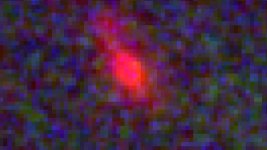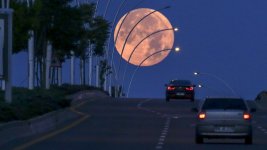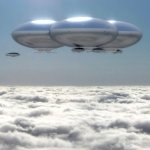Attachments
The Cosmic Dawn
New analysis of six of the most distant galaxies visible to the Hubble space telescope has shown that they were formed when the Universe was only 550 million years old.
Because these galaxies are so far away, the light from them takes time to reach us. The further away they are, the further back in time astronomers are observing them.
Knowing the age of the galaxies enabled the astronomers to calculate that the first stars were born 250 to 350 million years after the Big Bang, bringing light to the Universe.
Critically, the new analysis also indicates that the very first galaxies to be formed after the Big Bang are bright enough that they will be seen by the James Webb Space Telescope - the successor to the Hubble.
Astronomers work out when the first stars shone - BBC News
The attachment shows one of the distant galaxies which was studied. It is so distant that, even through the Hubble, it appears pixilated.
It's mind boggling to think we are looking back over 13 billion years to around 500 million years after the Big Bang! 😎
New analysis of six of the most distant galaxies visible to the Hubble space telescope has shown that they were formed when the Universe was only 550 million years old.
Because these galaxies are so far away, the light from them takes time to reach us. The further away they are, the further back in time astronomers are observing them.
Knowing the age of the galaxies enabled the astronomers to calculate that the first stars were born 250 to 350 million years after the Big Bang, bringing light to the Universe.
Critically, the new analysis also indicates that the very first galaxies to be formed after the Big Bang are bright enough that they will be seen by the James Webb Space Telescope - the successor to the Hubble.
Astronomers work out when the first stars shone - BBC News
The attachment shows one of the distant galaxies which was studied. It is so distant that, even through the Hubble, it appears pixilated.
It's mind boggling to think we are looking back over 13 billion years to around 500 million years after the Big Bang! 😎
Attachments
Wow, that is incredible. Very red shifted as well - for a hot young galaxy, I’d imagine it would be mostly in the blue end of the spectrum
That's why the James Webb will observe primarily in the infrared - to see even further back in time!
Essentially, Hubble can see the equivalent of "toddler galaxies" and Webb will be able to see "baby galaxies".
Comparison: Webb vs Hubble Telescope - Webb/NASA
Essentially, Hubble can see the equivalent of "toddler galaxies" and Webb will be able to see "baby galaxies".
Comparison: Webb vs Hubble Telescope - Webb/NASA
Last edited:
As an Engineer, I have always admired the Royal Navy's current battleships, the Type 45s.
TBH, I was a bit disappointed the Russians essentially ducked out of a recent fight with us in the Crimea:
HMS Defender: What will be the fallout from Black Sea incident? - BBC News
20 Soviet Jets and 2 Soviet patrol boats sounds like trouble. But believe me, without giving away any Military secrets, HMS Defender would have stomped them. 😀
TBH, I was a bit disappointed the Russians essentially ducked out of a recent fight with us in the Crimea:
HMS Defender: What will be the fallout from Black Sea incident? - BBC News
20 Soviet Jets and 2 Soviet patrol boats sounds like trouble. But believe me, without giving away any Military secrets, HMS Defender would have stomped them. 😀
You think they didn't know that? Surely you jest. They may be goofy but they're not exactly stupid. 🙂
Look here for some interesting photographs of 2021's Strawberry Moon. In pictures: Strawberry Moon rises - BBC NewsSuper Full Moon again next couple of nights.
Towards the end of June, the Moon usually sits lower in the sky and shines through more of our atmosphere. Because of this, the Moon can appear to have a pinkish hue.
However, the Strawberry Moon is said to have been so named by Native American tribes because this full moon signaled a time for gathering ripening strawberries and other fruits.
This is the last Supermoon of 2021.
Attachments
As I tireless explorer of the Universe, does anyone share my frustration in NASA's delay on releasing full-colour pictures of Ganymede (pronounced "GAN uh meed" for our Canadian Cousins)? Whatever is going on here? They did Black and White in Hours flat. Basic Maths tells me it only takes 3 times longer to go 3 colour. 😕
In Depth | Ganymede – NASA Solar System Exploration
I want to see this. 😎
In Depth | Ganymede – NASA Solar System Exploration
I want to see this. 😎
The first image of almost an entire side of Ganymede was taken by the JunoCam using a green filter, but you are correct that we are waiting for the same image taken through red and blue filters before we'll see a full colour image.They did Black and White in Hours flat. Basic Maths tells me it only takes 3 times longer to go 3 colour. 😕
However, since Ganymede is encrusted with water ice, I woudn't exactly expect Technicolor! 🙂
By the way, the image resolution is about 1 kilometre per pixel.
See the First Images NASA’s Juno Took As It Sailed by Ganymede | NASA
How the colour image is stitched together is explained here: Juno’s Ganymede Close-up | NASA
To obtain Ganymede images as Juno rotated, the camera acquired a strip at a time as the target passed through its field of view. These image strips were captured separately through the red, green, and blue filters. To generate the final image product, the strips must be stitched together and colors aligned. At the time this preliminary (green filter) image was generated, the “spice kernels” (navigation and other ancillary information providing precision observation geometry) necessary to properly map-project the imagery were not available. The red, and blue filtered image strips were also not available.

It was quite sad that Shatner and Nimoy fell out in later years:
In 2011, Shatner released a documentary called The Captains, where he interviewed actors like Kate Mulgrew and Avery Brooks who played starship captains on the Star Trek series. Apparently, Shatner had asked Nimoy to make an appearance in the documentary. Nimoy refused. Despite that, Shatner's cameraman filmed Nimoy secretly during a convention appearance to include as footage without Nimoy's permission. There was never a final argument or blow out over it, but that seemed to have been the last straw. They never spoke again.
"I thought he was kidding," Shatner said. "It was such a small thing."
But apparently, it wasn't a small thing to Nimoy. Even though they met again in 2014 to film a German car commercial, Shatner and Nimoy apparently never spoke off camera. They only communicated through their agents. Nimoy himself indirectly confirmed this. When Piers Morgan interviewed Nimoy in 2014 and asked if he'd seen Shatner, Nimoy merely said, "Not in a while… we don’t have that kind of relationship anymore. We used to."
Why Nimoy Died Hating William Shatner
Life is too short for grudges IMO. 😕
The reason I want to see a good colour picture of Ganymede, is I believe it is is quite a colourful and pretty moon.
List of geological features on Ganymede - Wikipedia
Not considered a likely candidate for Life. For that we look to Europa, Enceladus and Titan.
But has more tolerable radiation levels than Europa:
Ganymede (moon) - Wikipedia
Europa radiation will kill you in minutes flat! 😱
Is it possible fishes live on these moons? 🙂
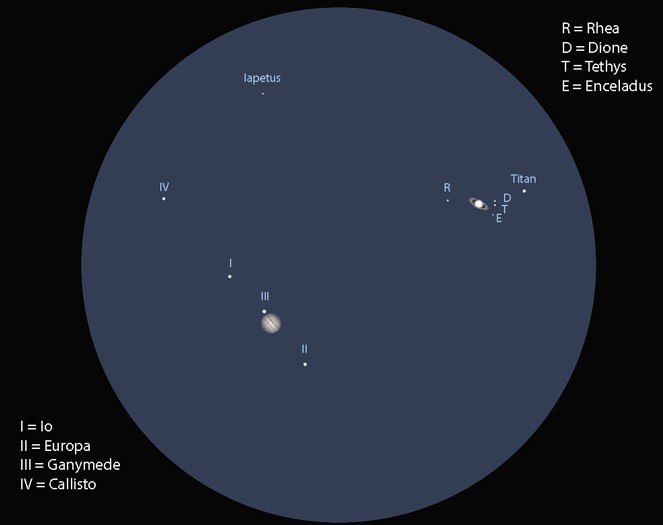
I donated my 3" telescope (with solid tripod) to my great nephews, But much fun I had with it.
The moons of Jupiter are mathematically interesting too.
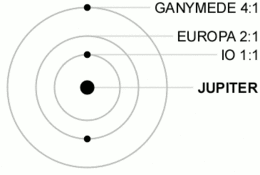
Have never figured out what outer Callisto contributes. Nearest I've got is its orbital period with Ganymede is about 22/7. But am a bit stumped.
List of geological features on Ganymede - Wikipedia
Not considered a likely candidate for Life. For that we look to Europa, Enceladus and Titan.
But has more tolerable radiation levels than Europa:
Ganymede (moon) - Wikipedia
Europa radiation will kill you in minutes flat! 😱
Is it possible fishes live on these moons? 🙂
I donated my 3" telescope (with solid tripod) to my great nephews, But much fun I had with it.
The moons of Jupiter are mathematically interesting too.
Have never figured out what outer Callisto contributes. Nearest I've got is its orbital period with Ganymede is about 22/7. But am a bit stumped.
Is it not Jupiter's mag fields that accelerate free particles (atoms/molecules that have been ejected from the surrounding moons) that cause the damage - or do we consider high velocity particles radiation (I guess this is what I understood to be gamma radiation)? IIRC some of those things around Jupiter were moving at 1000 km/sec - not relativistic but enough to cause serious cellular damage when they impact living organisms.
Bit of Heartbreak for m'learned Scottish friend Galu tonight... 🙂
Apparently Venus is a write-off for Intelligent or even Unintelligent life!
Clouds of Venus '''simply too dry''' to support life - BBC News
I always thought it was bit too HOT.
Ah well, we must hope that interesting Fishes live on Jupiter or Saturn's Moons.

Apparently Venus is a write-off for Intelligent or even Unintelligent life!
Clouds of Venus '''simply too dry''' to support life - BBC News
I always thought it was bit too HOT.
Ah well, we must hope that interesting Fishes live on Jupiter or Saturn's Moons.
@ Bonsai - you are correct.
Jupiter is the strongest particle accelerator in the solar system, driving charged particles up to almost the speed of light.
This is caused by a unique interaction between Jupiter and its moon Io.
Gas ejected from volcanoes on Io becomes ionised and gets caught up in Jupiter's strong and rotating magnetic field where the electrons and positive ions are accelerated up to millions of miles per hour.
Little Moon Io Helps Jupiter Accelerate Charged Particles to Incredible Speed
Jupiter is the strongest particle accelerator in the solar system, driving charged particles up to almost the speed of light.
This is caused by a unique interaction between Jupiter and its moon Io.
Gas ejected from volcanoes on Io becomes ionised and gets caught up in Jupiter's strong and rotating magnetic field where the electrons and positive ions are accelerated up to millions of miles per hour.
Little Moon Io Helps Jupiter Accelerate Charged Particles to Incredible Speed
Last edited:
It was always a very long shot that the phosphine discovered in the Venusian atmosphere might be associated with microbial life.Bit of Heartbreak for m'learned Scottish friend Galu tonight... 🙂
Apparently Venus is a write-off for Intelligent or even Unintelligent life!
Now, the hope appears to have 'dried up'!
However, WE could live there, some 50km up in the clouds! 😎
Attachments
Last edited:
@Galu - thanks. I didn’t realize they were moving that quickly! 😱.
As Steve noted, you wouldn’t last long on the surface of any of the inner moons.
As Steve noted, you wouldn’t last long on the surface of any of the inner moons.
- Status
- Not open for further replies.
- Home
- Member Areas
- The Lounge
- What is the Universe expanding into..

